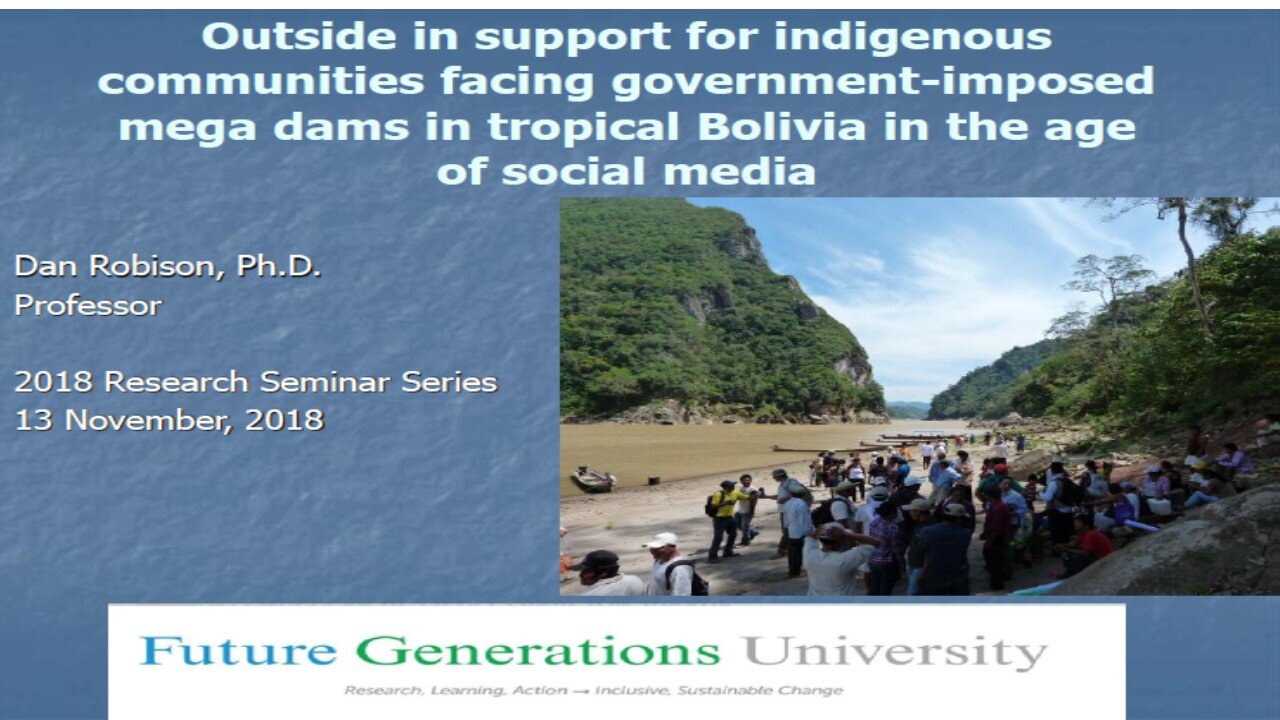Studies, Reports & Analyses
See what scholars, experts, & politicians are saying about the mega-dam craze in Bolivian Amazonia.
Roadmap Plan Proposal for the Energetic Transition of Bolivia
This Roadmap Plan, written collaboratively by the Universidad Católica Boliviana and the PUND in 2020, proposes an alternative plan for the energy transition to the nation’s current Energetic Plan of 2025. The new plan focuses more on the naturally high potential of solar power and other non-conventional renewables, rather than a foundation of thermoelectric and mega hydroelectric sources of energy. It also puts a focus on developing Bolivia’s national interconnected system (SIN), rather than trying to develop the infrastructure to export energy to other nations.
MAS’ 5 year plan aims to “continue with the investment in electricity generation and transmission, in order to ensure supply to the domestic market and exports of surpluses to neighboring countries configuring Bolivia as a regional energy center.” MAS has made considerable investment to install infrastructure in hydroelectric plants, “without previously ensuring their profitability, or having concluded a contract of long-term sale at a good price.”
Routledge Studies in Latin American Development October 2019
Even though regional deforestation was generally declining from 2000 to 2015, deforestation was much higher in international development finance institutions (DFI)-supported infrastructure projects. Policy areas of particular importance to increasing environmental accountability include: comprehensive environmental planning, meaningful stakeholder engagement, and transparent DFI project management process.
Click Here for information on the book
Universidad Mayor de San Andrés September 2019
Executive summary of a report (in Spanish) by faculty.
Click Here for full report
Universidad Mayor de San Andrés September 2019
Faculty presented results from their analyses of the technical and engineering components of the Geodata identification study prepared for ENDE (slides in Spanish).
Click Here for full report
IUCN Conference Report May 2019
The Defending Environmental Defenders conference marked the end of a three-year project that was launched in 2016 in five countries. This report summarises the three days of meetings: the first day was a closed session where the local partners shared their contexts, experiences and lessons learned. The second and third days were for a wider group of environmental defenders, and the focus was on capacity building and charting the way into the future.
Click Here for the full report
Marco Octavio Ribera Arismendi, TICCA February 2019
This analysis has been created at the express wish of the indigenous resistance movement in Bolivia, with the goal of plotting the major violations of the Rights of Indigenous Peoples on a map.
Click Here for the full analysis
Anne H. Toomey January 2019
This paper “presents a case of landscape making in the Madidi region of Bolivia to take a close look at collaborations and conflicts between various groups—indigenous communities, conservation organisations, and protected area officials… these groups have emerged out of a process of creating a shared landscape and that they are interdependent—both deeply entwined and radically distinct…I highlight the importance of interdependence as an active process of becoming, in which the spaces of contact and friction become so complex that the existence of one group is contingent on active engagement with the other.”
Click Here for full article
Fundación Solón December 2018
This Spanish-language report by the Fundacion Solon provides a comparative analysis of 4 planned mega-dams: Chepete, El Bala, Rositas and Cachuela Esperanza.
Click Here for full analysis
Michela Coletta, Malayna Raftopoulos November 2018
This article seeks to problematise current frameworks of global environmental governance by examining how the neoliberal model continues to rely on the state to suppress plurinational justice. The article argues that one of main challenges confronting environmental governance will be to reformulate sovereignty as an epistemic and relational – as well as political and territorial – set of relationships.
Click Here for the full article
Moran et. al, PNAS November 2018
This review paper discusses how the hydropower sector needs to not only focus on energy production but also, include the negative social and environmental externalities caused by dams and recognize the un-sustainability of current common practices.
Click Here for the full article
Watson et al. October 2018
Watson et al.’s report summarizes findings and recommendations from an international team of scientists’ efforts to map the world’s remaining terrestrial wilderness and intact ocean ecosystems. For instance, “stopping industrial development to protect the livelihoods of indigenous people can conserve biodiversity and ecosystem services just as well as strictly protected areas can. As such, the recognition of local community rights to land ownership and management could be a key way to limit the impacts of industrial activity.”
Click Here for full report
Universitat Autónoma de Barcelona June 2018
This research critiques the recent expansion of hydropower that is being legitimized through a discourse of sustainability, and focuses on the transformative forces that arise from within anti-dam movements. This thesis adopts the lens of political ecology and ecological economics and an activist-led research approach to investigate three main dimensions of anti-dam resistance.
Click Here for the full study
Colombia Check // Bolivia 2018
30 journalists, developers and photo/videographers from seven countries (Bolivia, Brazil, Colombia, Ecuador, Guatemala, Mexico and Peru) teamed up to document episodes of violence against environmental leaders and their communities. The result is this special investigative project with a database compiling 1,356 attacks spanning one decade (2009-2018) and 16 in-depth stories on individual cases. Available in English, Spanish and Portuguese.
Get the full story here
Forsberg et al. August 2017
In this analysis of the impact of 6 planned megadams in the Amazon basin including El Bala, the authors conclude that the resulting large reductions in sediment and nutrient supplies will negatively impact floodplain productivity and aquatic productivity. Mercury contamination of both fish and humans is expected to increase above and below the dams.
Click Here for full analysis
Fundación Solón // Geodata June 2017
Socioeconomic and Financial Evaluation Studies conducted by Geodata (in Spanish)
Click Here for full evaluation
Thomas Moorman 2017
This thesis examines two environmental conflicts in Bolivia, TIPNIS, and the resistance to the Chepete-Bala project. Utilizing indigenous identity to craft a distinct place-based environmentalism to combat government claims to their territory
Click Here for the Full Study
Almut Schilling-Vacaflor October 2016
Schilling-Vacaflor uses fieldwork in coca-growing peasant and indigenous communities to examine how these communities voices have been limited in favor of extraction corporations and governmental projects. This article looks into neo-extractivism and how it comes to play into issues of indigenous rights and environmental protections.
Get the full journal here
Paul E. Little April 2014
A geopolitical and socio-environmental analysis with proposals of better government for the Amazon”, that analyzes opportunities and challenges that one of the most important tropical rainforests in the planet is living are few. Written by the recognized anthropologist Paul E. Little.
Click here for the full story
Matt Finer & Clinton N. Jenkins April 2012
This article concludes with 3 major policy implications: 1) There is a critical need for further strategic regional and basin scale evaluation of dams. 2) There is an urgent need for a strategic plan to maintain Andes-Amazon connectivity. 3) Reconsideration of hydropower as a low-impact energy source in the Neotropics.
Get the full article here
World Rainforest Movement April 2003
This book gathers a selection of articles published in the monthly electronic bulletin of the World Rainforest Movement (WRM), addressing the issue of the impacts of large dams on forests and local communities, as well as the struggles developed at the local and global levels against them.
Click Here for the full book


























